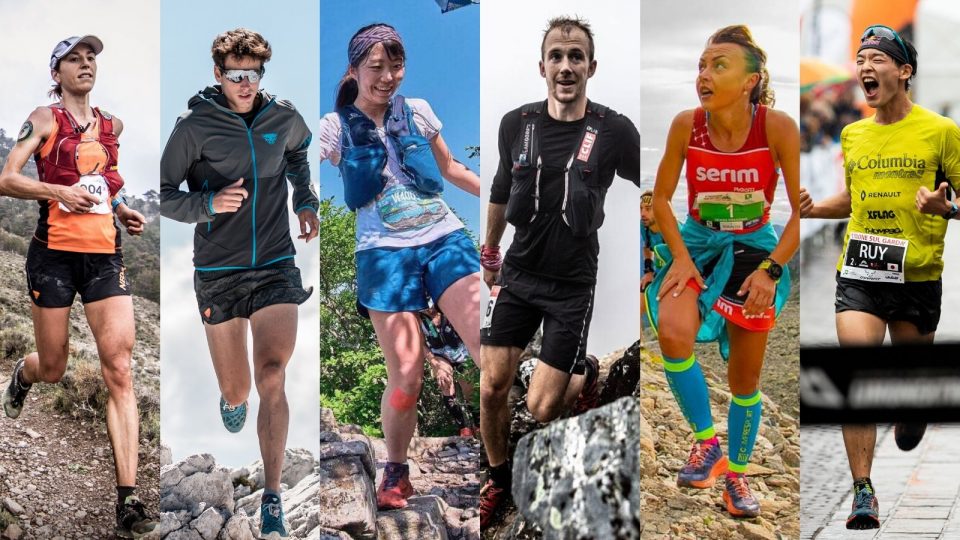Is sky running similar to trail running? No, you are wrong. Even though both of these sports run on an uneven surface, that does not mean they are the same.
What is sky running?
Sky running (mountain running) takes place in the mountains, which Sky running (mountain running) takes place in the mountains, which means you will be running on a paved road uphill at elevation on a mountain.
History of Sky Running
The origins of sky running began in 1992. This idea came from an Italian mountaineer, who wanted to make sky running a real discipline by incorporating racing in the sky into defined rules.
The first races he organised took place at Monte Rosa and Mont Blanc. After that, thanks to the support of a well-known brand of sportswear, he created a world circuit of sky running and took it across the countries, such as the Himalayas, the Rocky Mountains, the volcanoes of Mexico and the heights of Kenya.
In 1993, Giacometti had taken the right path, as sky running became more appreciated year after year. Till 1995, a real federation was born, the FSA (Federation for Sport at Altitude). Since then, sky running has become more popular. In 2008, the FSA was replaced by the ISF (International Skyrunning Federation). Gradually, many mountaineers joined this sport, and it became recognised at all levels.
Sky Running Training Plan for a Beginner
Before preparing your race in sky running, you have to prepare both mentally and physically, and, of course, do a lot of running. Do not juggle what to start first, seek out senior sky runners and running coach for advice.
Training for mountain running is tough and challenging, and you need to dedicate the time to indoor training, with toning exercises that aim to strengthen the body’s muscles. For this sport, endurance alone is not enough to prepare for a sky running race; physical strength and agility are essential as well.
Long Run
Do at least one long run in a week. These are at a moderate intensity workout for 2 hours. Running at a moderate intensity pace for any distance to build endurance is the same as easy running, but more efficient since it’s at a higher effort. Do take note that the risk is that you are more prone for injury. So, it is best to run at a moderate rather than a faster pace, as it will stress your body.
You will need to test which pace works for you and your body while you are running. For the duration of the long distance run, it will take approximately two hours. If you go more than 2 hours for your training, it will increase the chance of injury and require even more time to recover. To make your training more interesting, you can join the 7 summits online challenge to conquer the world’s highest peaks virtually in your runs.
Uphill Tempo
This workout works well on the treadmill because the effort to be consistent and control the effort with pace and gradient is in your hands. If you do not want to perform on the treadmill, outdoors is a good option as well. What you need to do is to find a good hilly, level pavement to train your tempo run.
Strength Training
Strength training for sky running specifically targets your legs, glutes and core muscle. It will help you to improve your downhill and uphill running speeds. Train at least 2 – 3 days per week to strengthen your muscles.
- Walking lunges
- Stair step up
- Chair lift off
- Bulgarian Split Squat
- Split Jump
- Push up
- Pull up
- Planks
Tips and Tricks To Start Sky Running
Power hike
Power hiking is the key in sky running, as it involves upper and lower body. Put your hands on your knees and use some force with your arms to help push along with it.
Research and study the course
Do some research on your maps before the race day. Normally, sky runners will encounter challenging environments with minimal marks on the map. So you will have to know where you are going and be able to navigate your way through mountainous terrain. Also, by reading the map, you will be able to pinpoint where the aid stations are and what lies ahead of you.
Prepare and test your gear
If you do bring gadgets for your sky races, it is important to try it out before the race day. Also, write down a list of what you need to bring on your race day. For example, water bottle, gels, or an entire backpack full of thermals, raincoat, beanie, gloves and others.
Train off-road
Sky running is completely different as it’s done on extremely rocky, boulder-strewn goat paths. This terrain will constantly test your muscles, joints and mind. To prepare yourself with this difficult task and the challenges of this type of terrain, you really need to do a fair amount of training on it. Do take the time to travel somewhere if you can’t find such an environment to help your training at least once a week.
Find the right shoes
A quality pair of shoes is a must for sky running, as your pair of kicks will go through the tough environment and weather, such as the rigors of rocks, water, heat and sometimes even snow. It is best to invest in one good pair of shoes with adequate grip for the type of terrain you’ll be racing in.
For instance, if there’s lots of mud, you’ll need big lugs. If there’s rocky terrain, toe protection is a must. Also, if you just bought your new shoes, it is best to wear them during your training so that you will not suffer any blisters or soreness during your race day.
Sky Running vs. Trail Running
Trail racing is an off-road terrain for a runner to run on, typically single track hiking trails with significant elevation gain and loss. The distance for a trail race ranges from 10 kilometres to over 100 miles, which is considered as “ultra.”
As for a mountain race, it is similar to a trail for varying distances, and it will be either uphill or downhill. Mountain races begin at the bottom of the mountain; normally, they occur in an alpine ski resort and finish at the top of the mountain.
Besides that, we are honoured to speak with six elite sky runners. They will be sharing their extraordinary experiences and why sky running has a place in their heart.
1. Ragna Debats
Bio: Netherlands, 40 year-old, Merrell athlete
All the way from the Netherlands, and after finishing high school, Ragna moved to Germany to become a professional horse trainer and follow her dreams. Years later, she moved to England and studied philology at Birmingham University. When she finished her studies, she moved to Spain and began her running career.
Within 10 years’, she reached the highest one can achieve in trail running, winning both the Trail World Championship as the Sky running Worlds Series Championship.
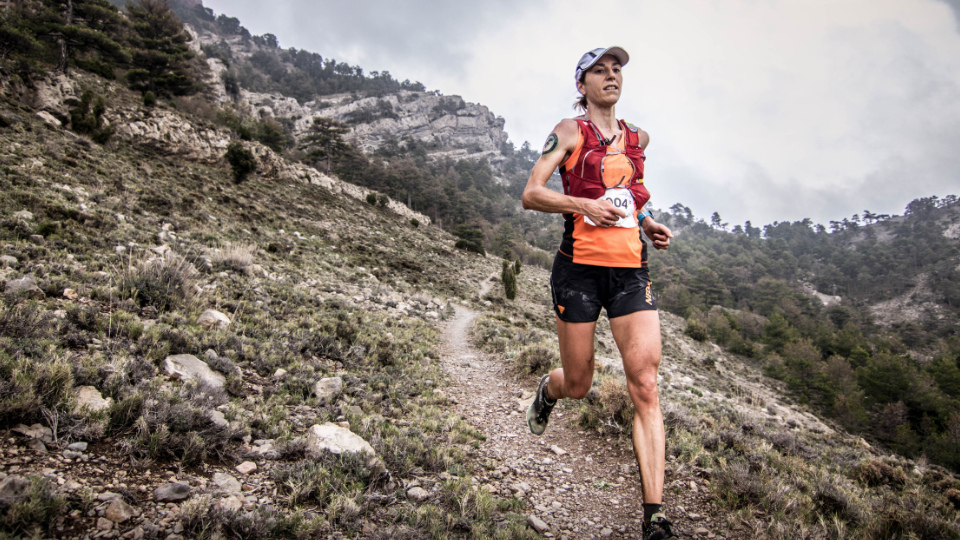
RS: Sky running is similar to trail running. Both of them are challenging sports. Why would you choose sky running as your sport?
Ragna: Actually, I like both! Sky running is at a higher altitude, and the terrain can be more challenging. There are often stretches with snow, or you’ll find big blocks of rocks, for example. Apart from technical terrain, you have to deal with high altitude and the climatology that comes along with it. In general, it requires a lot of different abilities.
On the other hand, I love trail running because the races are often more athletic. I love pushing the limits of my aerobic fitness!
RS: Where are your go-to places to train for sky running?
Ragna: When I was in Spain, I would go to the Pyrenees, which are close. We travel a lot, so most of the time, we train in different countries and different areas. This way, we can run in various terrains.
RS: How do you train?
Ragna: For me, it works best to train dynamically and limited hours. I improve faster if I do a lot of interval training like repetitions and fartleks. I combine those training sessions with road cycling. Also, I prefer two speed sessions on one day than one longer session with volume training.
RS: What is the most exciting part when you run in a new mountain or route?
Ragna: I love exploring! It motivates me to discover places whilst running. It makes me feel very fortunate. I think a big part of my energy comes from the impressions I get during my runs.
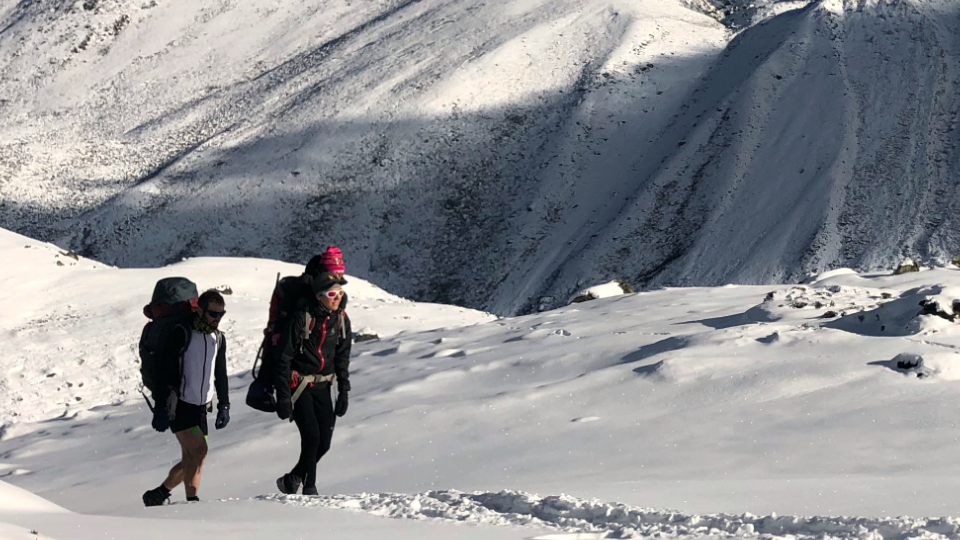
Throughout this journey, my family is my pillar of strength.
RS: During your race, if you encounter hardship, such as injury, how will you overcome it?
Ragna: I don’t usually get injured during a race, but if it happened, I would step out of it immediately. I do get to deal with other types of hardship, like tiredness or mental difficulties. If that happens, I try to think positively and use various strategies to distract myself and get strong again.
RS: What is the one thing that you would like to bring to your sky running race?
Ragna: My daughter, husband and, in general, my family! It makes me feel much stronger. I believe my family is my strength.
RS: What useful tips and tricks have you found since you picked up sky running?
Ragna: I think it is important to go step by step and not to ask too much of yourself. This way, you can enjoy it, and you will improve automatically. If you ask too much of yourself, you will be more likely to get injured or get frustrated and tired. Always be pleased with small improvements!
RS: What does sky running means to you?
Ragna: It is not just my lifestyle but our family lifestyle! Both my partner and I are professional athletes and live it to the full. This year, we are on a big family project for one whole year. It is called Rolling Mountains: www.rolling-mountains.com
We are travelling to all the continents with our daughter and dog and race one big race on each continent. A cameraman travels with us, who captures all the things we experience as a family and as athletes in real life. We want to feature success and fun as well as the hardships we will encounter.
You can follow Ragna on Instagram: @ragnadebats
2. Ruy Ueda
Bio: Japanese, 26 year-old, Runner
Played football for 9 years during elementary school and junior high school. When Ruy was in junior high school, he also chose to do track and field. He graduated from Saku-Chosei high school, which is a famous high school in Japan as EKIDEN. This high school has been producing Olympian runners. Due to running, he was injured countless times in high school. This kept him going as he enjoys running very much.
In 2013, Ruy encountered trail running at university. He won the first race in his trail running career and ran a course record. In 2014, his results surprised all trail runners in Japan because he won the Hasetsune Cup and ran with a 7:01:13 course record. In Japan, the Hasetsune Cup is the biggest and most noticed race.
Ever since then, he has stepped up to become a new star as a running athlete. Finally, Ruy left glorious achievements in 2016. In April, he won the Golden Ticket Race of Western States, the “Gorge Waterfalls 100K” and ran a course record.
The following July, he won the Gran Sasso Sky Race to hold the 1st SKYRUNNING Youth World Championship. Further, he was in 2nd place in the CCC, which no other Japanese could do.

RS: Sky running is similar to trail running. Both of them are challenging sports. Why would you choose sky running as your sport?
Ruy: I do try and enjoy trail running, and I want to participate the Trail Running World Championship in 2021. Personally, I do register one UTMB race every year. It’s true, I like sky running because of the superb views. Sky running is thrilling and competitive as it is a compact race. I would love to run many races, but if I choose ultra, I couldn’t satisfy my desire.
RS: Where are your go-to places to train for sky running?
Ruy: I go to the mountain, which has a very steep or technical section. I also train in the Low Oxygen Room because sky running is almost held at over 2000m.
RS: How do you train?
Ruy: It would be physical training. The purpose is to activate those muscles that are not usable and balance improvement. By doing this, I won’t stall at the final part of a race.
RS: What is the most exciting part when you run in a new mountain or route?
Ruy: It’s like an adventurer that keep finding new scenery. That is why I do this sport.
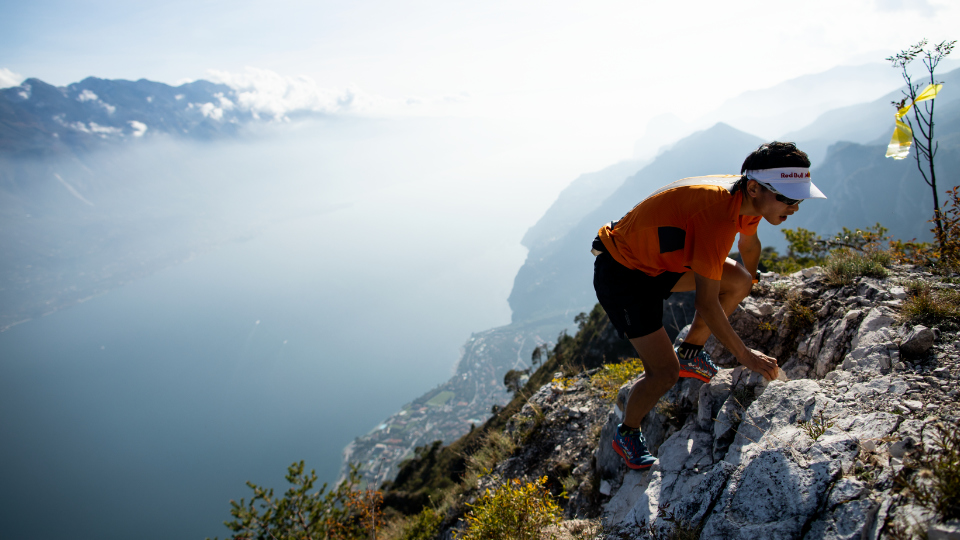
Sky running gives me visibility, many experiences and many friends.
RS: During your race, if you face hardship, such as injury, how will you overcome it?
Ruy: If I get into a serious injury during a race, I’ll decide to DNF. This is because I do not want to get a terrible injury, and I will heal faster so that I can enjoy the mountain again.
RS: What is the one thing that you would like to bring to your sky running race? Why?
Ruy: I will bring a strong heart when I participate in a race. If you want to enjoy a sky running race, you will have to enjoy the steep uphill or look for a beautiful view when you feel challenged.
RS: What useful tips and tricks have you found since you picked up sky running?
Ruy: First, you must have passion for the sport. What kind of scenery will spread from that? If you have the spirit, you can enjoy the journey in sky running. Second, physical training. I recommend doing core training because the surface is unstable. If you have a good core, you can run more safely. I think this is common in trail running.
RS: What does sky running mean to you?
Ruy: Sky running is my treasure. It makes me stronger. Furthermore, it gives me visibility, many experiences and many friends. I’m really happy to have sky running in my life.
You can follow Ruy on Instagram: @uedaruy
3. Ayaka Ueda
Bio: Japanese, 26 year-old, Company employee, 2020 Japan National Team of Skyrunning
During Ayaka’s childhood, she loved to do basic skiing and athletics (sprint), and now she enjoys sky running and ski mountaineering.
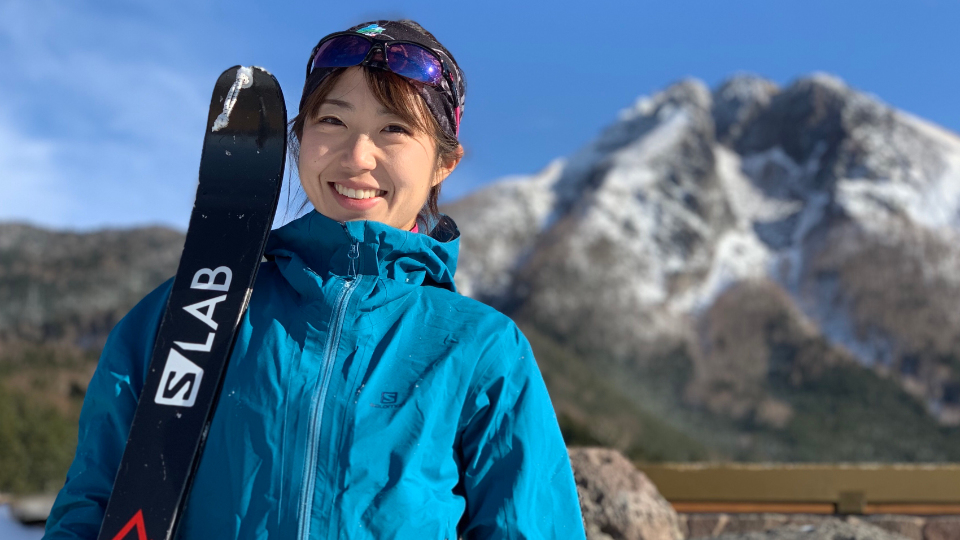
RS: Why would you choose sky running as your sport?
Ayaka: I like the feeling of climbing upwards and the competitiveness of aiming for the summit. In addition, a speedy race is one of my favourite reasons for sky running.
RS: Where are your go-to places to train for sky running?
Ayaka: On weekdays, I practiced speeding up on the road in the low oxygen chamber. I often go to the mountains on holiday. I enjoy running or mountaineering during the summer and ski mountaineering in the winter. Ski mountaineering is recommended because it can train your cardio function!
RS: How do you train as a sky runner?
Ayaka: I work as a company employee in Tokyo and have limited practice time, so I try to practice efficiently. I especially like practicing in the low oxygen chamber because it can be practiced with a high load in a short time.
RS: What is the most exciting part when you run in a new mountain or route?
Ayaka: I’m excited when I think about how wonderful the scenery is going to be. This is because the scenery I see after climbing the mountain is exceptional. It is very interesting because the expressions that can be seen from the mountains are completely different.
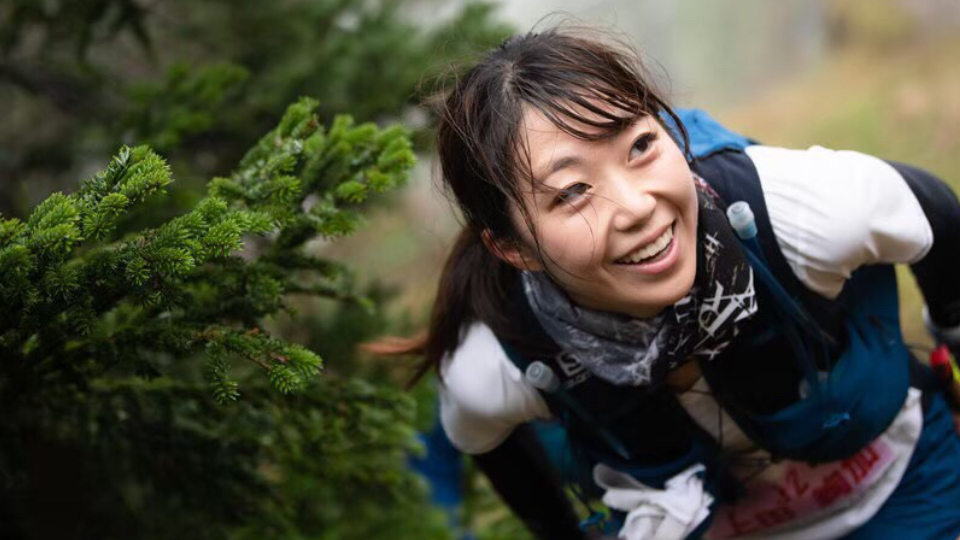
To me, sky running is an adventure and it’s fun to find a new me during the journey.
RS: During your race, what would you do if you are injured?
Ayaka: First, be calm. Then, address your injury so that there is no secondary damage around me.
RS: What is the one thing that you would like to bring to your sky running race?
Ayaka: If I can only take one thing to the mountain, I will bring cold protection (ex: waterproof shells). There may be water in the mountains, and it’s hard to keep warm without thick clothes. When my body cools, I lose strength.
RS: What useful tips and tricks have you found since you picked up sky running?
Ayaka: Don’t forget to enjoy the mountains. Even if something unexpected happens, I think that you will most likely be able to overcome it if you have fun. In addition, sky running is more uphill and downhill than trail running. If you do not give up, I think it is a competition where you can recover in the section that you are good at.
RS: What does sky running mean to you?
Ayaka: I like the feeling of climbing upwards and the competitiveness of aiming for the summit. Also, speed racing is one of the favourite reasons in sky running. To me, it is an adventure, as it’s fun to find a new me and find plants and animals that you haven’t seen before through sky running.
You can follow Ayaka on Instagram: @ayacan182
4. Jonathan Albon
Bio: United Kingdom, 30 year-old, Athlete
Started running in early 20s. Moved to Norway in 2014 and began a full-time racing career. Self-coached and has a training ethos as opposed to strict training plans. Concentrates on the enjoyment aspect. ‘All round’ athlete that enjoys cross training and adventures to keep fit. 50:50 summer season between obstacle racing and sky/trail running. Off season in winter.
Main training in the winter is ski touring, running and biking in the summer. Typical training week winter – 12-15000m climb on skis, 1x strength session, 2x climbing sessions Typical training week summer – 4000m climb running, 4000m climb cycling, 2-3x climbing sessions.
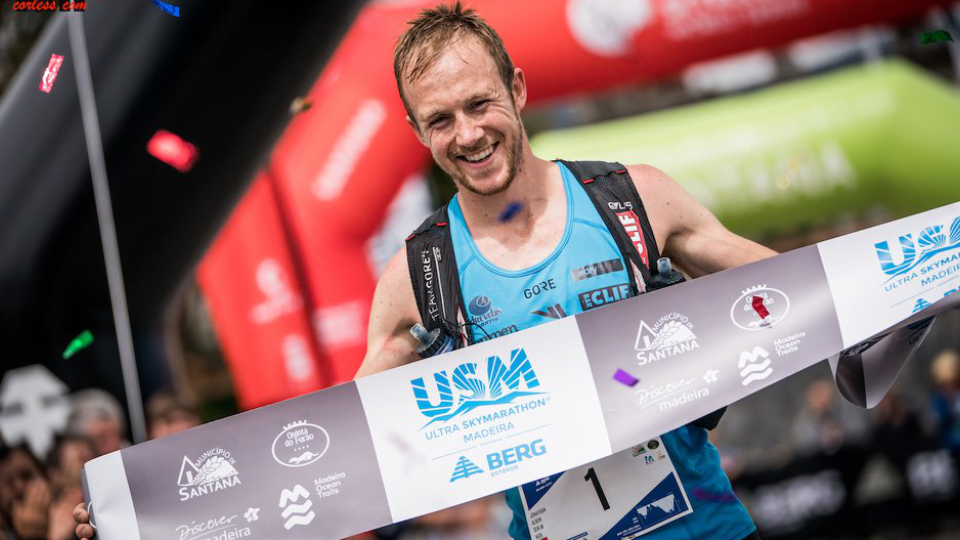
RS: How do you get involved in sky running?
Jon: I like sky running because the limiting factors where you can run in a race are far less than other types of races. In a sky race, you can find yourself on exposed ridges, glaciers and steep mountain sides that challenge an entirely different set of skills than usual trail running.
RS: Where are your go-to places to train for sky running?
Jon: I live in Norway, and this is a perfect country for sky running training. There are thousands of different mountains to explore and lots of snow in the winter for cross-training. The only problem with Norway is the lack of altitude, I live at sea level, so to compete above 2000m can be quite difficult for me.
RS: How do you train?
Jon: I like to do lots of skiing as cross-training in the winter and run/cycle in the summer. I have always tried to concentrate on the enjoyment side of training and do the activities I love the most.
RS: What is the most exciting part when you run in a new mountain or route?
Jon: Usually, the downhills are quite exciting. Going uphill fast is a weakness of mine, so I usually end up pushing really hard on the downhill to try and compensate.
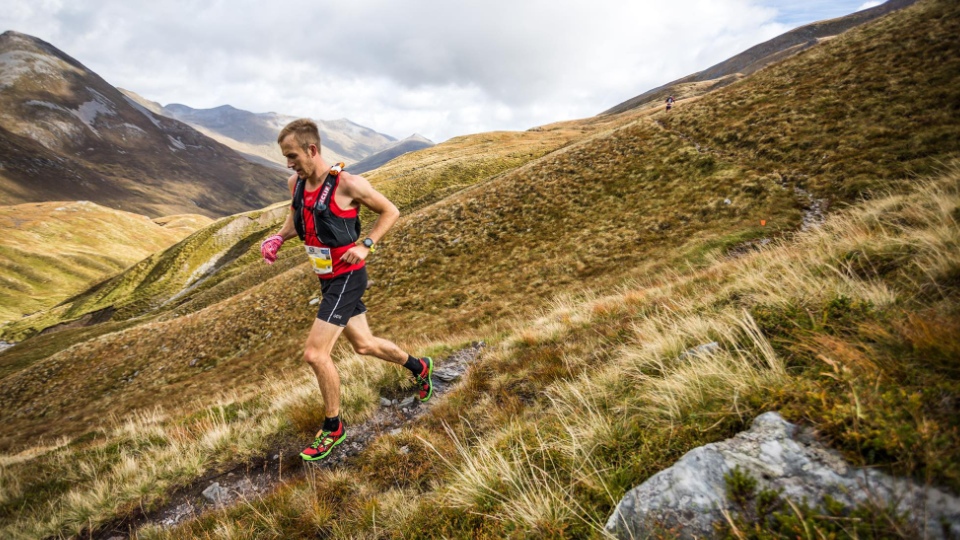
Sky running gives me the ability to travel and experience those cool mountains moving light and fast.
RS: During your race, how do you ensure that you don’t give up?
Jon: Sky races are very painful races. You have to push yourself really hard for many hours on end, and your body is telling you to stop the entire time, but you keep pushing forward. When races get really hard, I try to break the course down, this can be from concentrating on getting to the next top, or even counting 10 seconds of running followed by 10 seconds of hiking.
RS: What is the one thing that you would like to bring to your sky running race?
Jon: My favourite VJ XTRM shoes. VJ uses an extremely grippy rubber; it is so grippy on wet rock that on many ridges I don’t think I would have liked to be running up there in any other shoes.
RS: What useful tips and tricks have you found since you picked up sky running?
Jon: Pacing a sky race is really important. You will likely end up pushing too hard at the start and getting tired before the end. I pick a certain heart rate, which is the best way to stop myself pushing too hard at the beginning.
RS: What does sky running mean to you?
Jon: Sky running means the ability to travel and experience some cool mountains moving light and fast.
You can follow Jon on Instagram: @jonalbon
5. Dragomir Duiculeasa Denisa Ionela
Bio: Romana, 27 year-old, Sportswomen
From Romania, Dragomir’s main passion is running, no matter where she goes. She started running races with obstacles, especially the 1500m hurdles and in the first years of jouniorate. She was able to get more medals, both nationally and internationally.
After years of obstacles races, she fell in love with the mountains. So, 2010 was a change, the most inspired change she has made. It was the moment she decided to participate in mountain running races, where she managed to get the “ticket” to participate in the Balkan Championships, respectively the European Mountain Running Championships and also won the European Mountain Running Championship.
The mountains have risen from year to year, distances have increased, and 2014 was marked by participation in Retezat SkyRace România, a contest which opened her way to sky running competitions in Europe. A number of national and international success stories followed in all these years.
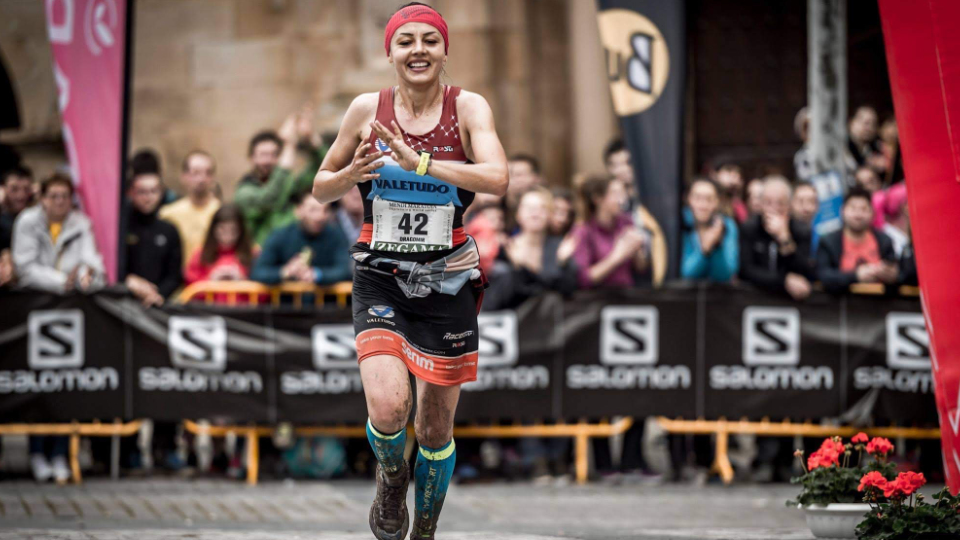
RS: Why did sky running attract you?
Dragomir: I can say that sky running chose me. My first race was a challenging one. I didn’t know what was waiting for me when I woke up at the start of my first sky running race. I remember that I was exhausted, but the feeling that I was able to finish and win was unique. During the race, I discovered the limit between heaven and earth that nothing is more beautiful than just being you and your own body and mind. Also, sky running gives me the opportunity to go beyond my own limits.
RS: Where are your go-to places to train for sky running?
Dragomir: During the winter, I train in the city (forest, street, stadium) because of the mountains, there are a lot of snow. In the summer, I usually do altitude training because I love to spend my time in the mountains.
RS: Which training suits you the best so far?
Dragomir: I always try to do different types of workouts, but my favourite type of workout is the tempo session.
RS: What is the most exciting part when you run in a new mountain or route?
Dragomir: I always look for new trails or discover new mountains. But if I am in the race, I will fully concentrate on the race track and my body’s condition.
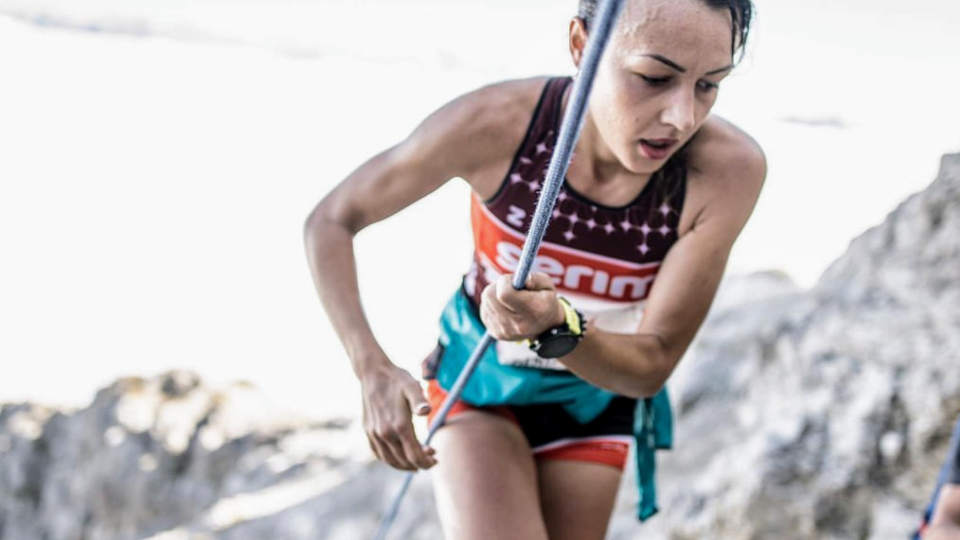
Sky running gives me the opportunity to go beyond my own limits.
RS: What would you do if you were injured during a sky running race?
Dragomir: First of all, sky running is a passion for me, and I want to do this for a long time, so I always look after my health first, and if I can manage the pain without big consequences, I will do my best to achieve a great result.
RS: What is the one thing that you would like to bring to your sky running race?
Dragomir: For me, sky running is a complete sport because you don’t just need to be a good athlete. You need to have a good uphill and downhill technique, manage your food and hydration properly during the race, and make smart and correct choices about your equipment. In my opinion, the most important thing is to love and respect the mountains.
RS: What useful tips and tricks have you found since you picked up sky running?
Dragomir: Before you start to run, you must spend a lot of time in the mountains, but at the same time, you also need to improve your athletic performance by doing a lot of specific workouts. The most important tips and tricks, in my opinion, is to respect the mountains.
RS: What does sky running mean to you?
Dragomir: For me, sky running, is a lifestyle, which constantly offers me a new challenge. As for my personal conclusion, while I can run the same race many times, I always had different experiences.
You can follow Dragomir on Instagram: @denisadragomirddy
6. Oriol Cardona Coll
Bio: Spain, 25 year-old, Athlete
At the age of 3, Oriol went for Ski Alpine till he was 13 years old. After that, he started ski mountaineering till now. He has always been very athletic from 3-17 years-old, and he also did trail running during the ages of 18 – 25. Ski mountaineering and trail running has always in Orio’s family, as his father and brother also do trail and ski mountaineering.

RS: Sky running is similar to trail running. Both of them are challenging sports. Why would you choose sky running as your sport?
Oriol: I don’t see much difference between both. For me, trail and sky running is all about running in the mountains. I imagine sky running means run higher in altitude and wild places. In reality I love that, but I also love running fast in less technical places. I choose sky running for the technical trails and the ambience in the races.
RS: Where are your go-to places to train for sky running?
Oriol: I go to the Pyrenees, as it’s a perfect place for training. I’ve been living here since I was 18. I’m in the oriental part of the Pyrenees, and I can find technical places, flat and fast trails, good weather and, most importantly, friends and colleagues that also do trail or sky running.
RS: How do you train?
Oriol: During the winter season, I’ve done a ski mountaineering season, so I think my shape comes from there. During the summer, my main goal is to make a good transition between skiing and running and also to keep in shape all summer. I think the key of my race is to arrive in summer in good shape, I train a lot during winter, the skimo season makes me really strong, and during summer, I just try not to lose too much pace.
RS: What is the most exciting part when you run in a new mountain or route?
Oriol: I really love when I’m running in the higher parts of the mountains. I love the views, yes, but what I love the most is the feeling of the cold weather, feeling the wind in my face when I’m running in the ridges or when I’m climbing to the top of the mountains, that is what I love the most.
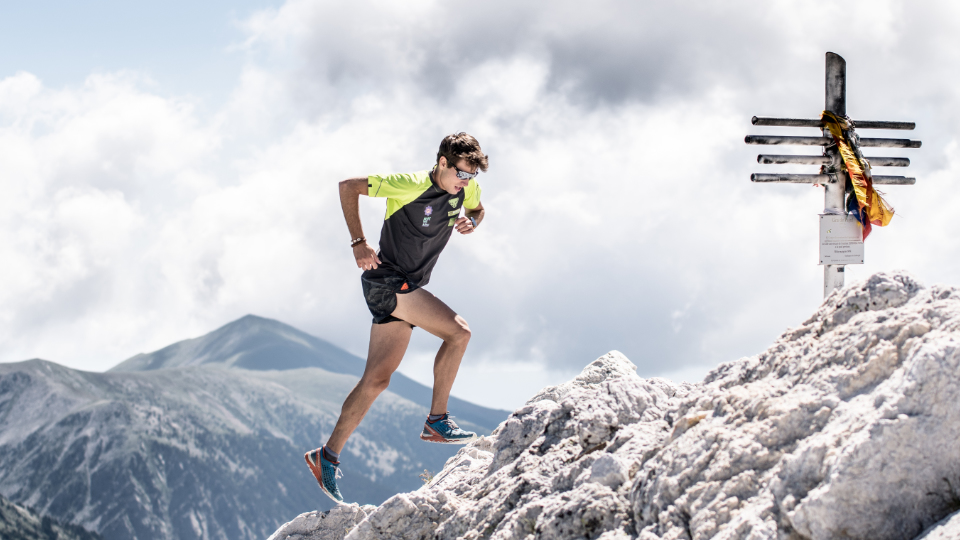
Sky running is about feeling nature and exploring amazing places while I’m doing sport.
RS: During your race, if you are injured, what would you do?
Oriol: First of all, I will stay calm, cold mind and face the situation. I don’t like to push my body to the extreme when I have an injury, so if the injury lets me keep on running, I will continue the race. But if not, I will just stop for a while and re-try. If I still cannot run or it is too painful, I will abandon the race. I don’t like to play with the health of my body for a race.
RS: What is the one thing that you would like to bring to your sky running race?
Oriol: I would like to bring a camera to capture all the moments and highlights of the race.
RS: What useful tips and tricks have you found since you picked up sky running?
Oriol: I think the most important thing for a runner who wants good results is to control all the possible situations you can face on sky running. Sky running is not only about being a strong runner, it’s about moving fast in technical parts and hiking as well. In addition, it is also about running fast many different downhills and flat parts. So, it’s important to train for all these things because in a sky running race, you can find very different parts, and you have to be prepared for all of them.
RS: What does sky running mean to you?
Oriol: It’s a way to enjoy the mountains. It’s about feeling nature and exploring amazing places, such as summits, valleys and ridges while I’m doing sport.
You can follow Oriol on Instagram: @oriolcardonacoll
Sky running had shaped their lives in every way as it taught them to dream big and make it happen. We might not be able to travel to the mountains now, but we can still conquer the 7 highest summits in the world by completing the world’s first 7 summit online challenge 2020 created by Spacebib. You can even wear a training mask to simulate the air pressure of the mountains to make your run more challenging.
More about sky running
How do you train for sky running as a beginner?
As for a beginner, you will need to go for a long run once a week and include uphill tempo and strength training at least 2 -3 times a week.
How do I get better in sky running?
Before you go for training or race, make sure to do your research and study the course in advance. Also, be sure to test out your gear to prevent any technical issue during training or race.
What kind of shoes to train for sky running?
It is best to own a pair of quality shoes for sky running that will go through tough environment and have a good grip for the any type of terrains. Also, if you just bought your new shoes, it is best to wear them during your training so that you will not suffer any blisters or soreness during your race day.
What is the difference between sky running and trail running?
Sky running begin at the bottom of the mountain and finish at the top of the mountain. Trail running will be either uphill or downhill.



